-

Manufacturer Good Price Hesperidin CAS:520-26-3
Hesperidin is a flavonoids, which has the structure of hydrogenoflavonoid oxyladin and is weakly acidic. Pure products are white needle crystals, which are the main components of vitamin P. After hydrogenation of orange peeling, Hesperidin is a natural sweetener dihydrogen detection. The sweetness is 1000 times that of sucrose, which can be used as functional food. Hesperidin has a variety of biological characteristics. Modern research has found that orange pepperin can antioxidant and anti -cancer, mold -proof, anti -allergic Chemicalbook, lowering blood pressure, inhibit oral cancer and esophageal cancer, maintain osmotic pressure, enhance capillary blood toughness , Reduce cholesterol and other effects. Related studies have shown that Hesperidin has a broad -spectrum inhibitory effect on common contaminated bacteria for food, and has significant inhibitory effects on Bacteria Bacteria, Rat Thalette Salmonella, Visatus, Hedar Coccus, and cholera. Therefore, it is widely used in food additives and food processing.
CAS: 520-26-3
-

Manufacturer Good Price PVB( Polyvinyl Butyral Resin) CAS:63148-65-2
Polyvinyl Butyral Resin(PVB) is a product that is contracted by polyvinyl alcohol and butadhyde under acid catalytic. Because PVB molecules contain long branches, they have good softness, low glass temperature, high stretching strength and anti -impact strength. PVB has excellent transparency, good solubility, and good light resistance, water resistance, heat resistance, cold resistance, and film formation. It contains functional groups that can perform various reactions such as acetylene -based saponification reactions, vinegarization of hydroxyl, and sulfonic acidization. It has high adhesion with glass, metal (especially aluminum) and other materials. Therefore, it has been widely used in the fields of manufacturing safety glass, adhesives, ceramic flower paper, aluminum foil paper, electrical materials, glass reinforcement products, fabric treatment agents, etc., and become an indispensable synthetic resin material.
PVB( Polyvinyl Butyral Resin) CAS:63148-65-2
Series:PVB( Polyvinyl Butyral Resin) 1A/PVB( Polyvinyl Butyral Resin) 3A/PVB( Polyvinyl Butyral Resin) 6ACAS: 63148-65-2
-

Manufacturer Good Price Phosphorous Acid 85% CAS:7664-38-2
Phosphorous Acid is also known as orthophosphate (molecular structure H3PO4), pure product for colorless transparent viscous liquid or square crystal, odorless, very sour taste. 85% Phosphorous Acid is a colorless, transparent or slightly light, thick liquid. Melting point 42.35℃, specific gravity 1.70, high boiling point acid, can be soluble with water at any ratio, boiling point 213℃ (losing 1/2 water), pyrophosphate will be generated. When heated to 300℃, it becomes metaphosphoric acid. Relative density 181.834. Soluble in water, soluble in ethanol. Phosphorous Acid is a common inorganic acid in Chemicalbook. It is a medium and strong acid. Its acidity is weaker than strong acids such as sulfuric acid, hydrochloric acid and nitric acid, but stronger than weak acids such as acetic acid, boric acid and carbonic acid. When Phosphorous Acid reacts with sodium carbonate at different pH, different acid salts can be formed. Can stimulate the skin to cause inflammation, damage the body tissue. Concentrated Phosphorous Acid erodes when heated in porcelain. It is hygroscopic and sealed. Commercially available Phosphorous Acid is a viscous solution containing 482% H3PO. The high viscosity of Phosphorous Acid solution is due to the existence of hydrogen bonds in the solution.
CAS: 7664-38-2
-
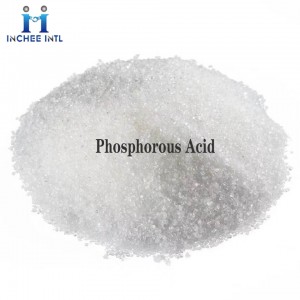
Manufacturer Good Price Phosphorous Acid CAS:13598-36-2
Phosphorous acid is an intermediate in the preparation of other phosphorous compounds. Phosphorous acid is a raw material to prepare phosphonates for water treatment such as iron and manganese control, scale inhibition and removal, corrosion control and chlorine stabilization. The alkali metal salts (phosphites) of phosphorous acid are being widely marketed either as an agricultural fungicide (e.g. Downy Mildew) or as a superior source of plant phosphorous nutrition. Phosphorous acid is used in stabilizing mixtures for plastic materials. Phosphorous acid is used for inhibiting high-temperature of corrosion-prone metal surfaces and to produce lubricants and lubricant additives.
CAS: 13598-36-2
-
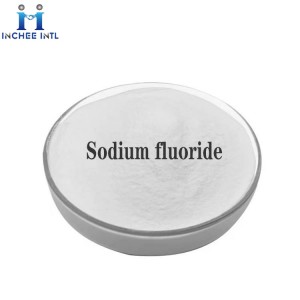
Manufacturer Good Price Sodium fluoride CAS:7681-49-4
Sodium fluoride : NaF;SF; Inorganic Fluoride;Molecular Weight: 41.99 Physical and chemical properties: Colorless shiny crystal or white powder, specific gravity 2.25, melting point 993C boiling point 1695C. Soluble in water (solubility 10C366,206 406,300422,40C 4.4.60C468.80-C4.89,100 “C508), hydrogen teacher acid, slightly soluble in alcohol. Aqueous solution is weak alkaline, soluble in hydrofluoric acid and into sodium fluoride, can corrode glass. Toxic!.
Sodium fluoride CAS 7681-49-4 NaF;SF; Inorganic Fluoride; UN NO 1690; Hazard level: 6.1
EINECS NO 231-667-8
Product Name: Sodium fluorideCAS: 7681-49-4
-

Manufacturer Good Price Omega 3 powder CAS:308081-97-2
OMEGA-3, also known as ω-3, Ω-3, w-3, n-3. There are three main types of ω-3 fatty acids. The important essential ω3 fatty acids include α-linolenic acid, eicosapentaenoic acid (EPA), docosahexaenoic acid (DHA), which are polyunsaturated fatty acids.
Found in Antarctic krill, deep-sea fish and some plants, it is very beneficial to human health. Chemically, OMEGA-3 is a long chain of carbon and hydrogen atoms linked together (more than 18 carbon atoms) with three to six unsaturated bonds (double bonds). It is called OMEGA 3 because its first unsaturated bond is on the third carbon atom of the methyl end.CAS: 308081-97-2
-
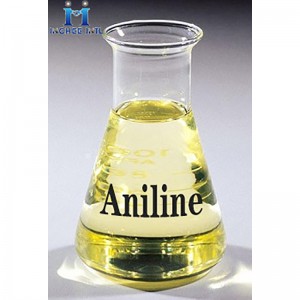
Manufacturer Good Price Aniline CAS:62-53-3
Aniline is the simplest aromatic amine, benzene molecule in a hydrogen atom for the amino group of compounds generated, colorless oil flammable liquid, strong smell. The melting point is -6.3℃, the boiling point is 184℃, the relative density is 1.0217(20/4℃), the refractive index is 1.5863, the flash point (open cup) is 70℃, the spontaneous combustion point is 770℃, the decomposition is heated to 370℃, slightly soluble in water, easily soluble in ethanol, ether, chloroform and other organic solvents. Turns brown Chemicalbook color when exposed to air or sunlight. Available steam distillation, distillation to add a small amount of zinc powder to prevent oxidation. 10 ~ 15ppm NaBH4 can be added to the purified aniline to prevent oxidation deterioration. Aniline solution is basic, and acid is easy to form salt. The hydrogen atom on its amino group can be replaced by a hydrocarbon or acyl group to form secondary or tertiary anilines and acyl anilines. When the substitution reaction is carried out, the adjacent and para-substituted products are mainly formed. Reaction with nitrite yields diazo salts from which a series of benzene derivatives and azo compounds can be made.
CAS: 62-53-3
-
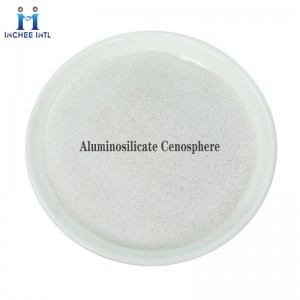
Manufacturer Good Price Aluminosilicate Cenosphere CAS:66402-68-4
Physical performance:
Fly ash is a solid waste discharged from coal-fired power plants. Aluminosilicate Cenosphere is hollow beads extracted from fly ash, accounting for about 1% ~ 3% of the total amount of fly ash.
Characteristics:
The mass loss of floating beads in strong acid-base solutions such as 10% hydrochloric acid, sulfuric acid, nitric acid and potassium hydroxide for 24 hours is 1.07% ~ 2.15%, and 11.58% in 1% hydrofluoric acid. Therefore, floating beads have strong corrosion resistance to general strong acids and bases, so they can be used in special projects with high requirements for acid-base resistance (except hydrofluoric acid)..CAS: 66402-68-4
-
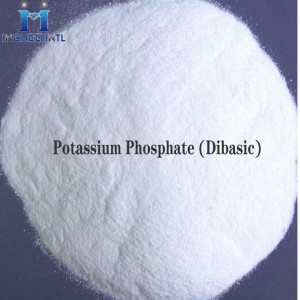
Manufacturer Good Price Potassium Phosphate (Dibasic) CAS:7758-11-4
Dipotassium phosphate (K2HPO4) is a common source of phosphorus and potassium, which is often used as a fertilizer. Dipotassium phosphate is also widely applied in the food industry, such as food additive and electrolyte replenisher for workout supplement. Another usage of dipotassium phosphate is as a medicine, who serves as a diuretic or laxative. Besides, Dipotassium phosphate is employed in the production of imitation dairy creamers to prevent coagulation and used in certain powders to prepare beverages. In addition, Dipotassium phosphate is commonly seen in chemical laboratories for producing buffer solutions and trypticase soy agar which is used to make agar plates for culturing bacteria.
CAS: 7758-11-4
-
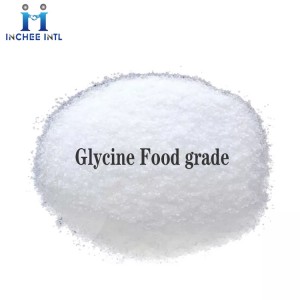
Manufacturer Good Price Glycine Food grade CAS:56-40-6
Glycine :White monocrystalline or hexagonal crystals, or crystalline powder. No odor, special sweetness. It can relax the acid and alkali flavor, cover the bitterness of adding sugar to the food, and enhance the sweetness. Relatively dense 1.1607 melting point 248 ° C (generating gas and decomposition). It is a simple structure in the amino acid series and the unnecessary human body. It has acidic and alkaline functional groups in the molecule. It is a strong electrolyte in the aqueous solution. , Easy to dissolve in water, dissolved in water: 25g/100ml at 25 ° C; 67.2g/100ml at 50 ° C. 25 ° C). Extremely difficult to dissolve in ethanol (0.06g/100g water -free ethanol). Almost insoluble in solvents such as acetone and ether. React with hydrochloride to generate salt hydrochloride.
Glycine food grade CAS: 56-40-6
Product Name: Glycine food gradeCAS: 56-40-6






